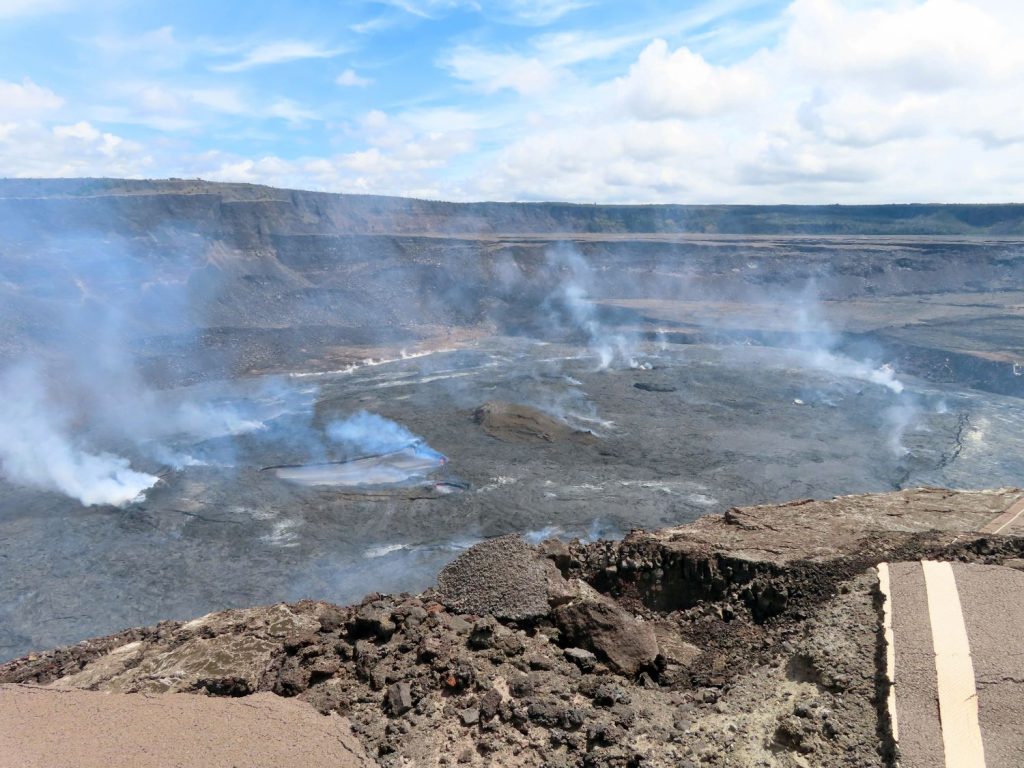Recent ‘Quakes Not Impacting Big Island Volcanic Activity

Two recent magnitude-4-plus earthquakes and a spike last month in seismic activity at a underwater seamount have not affected volcanic activity on the Big Island, according to a Hawaiian Volcano Observatory scientist.
Jefferson Chang, a geophysicist at HVO, said the largest of the recent earthquakes, a magnitude-4.6 temblor that rattled the evening of July 26 under the Kama‘ehuakanaloa seamount, formerly known as Lōʻihi, appears to be from crustal readjustment — rocks creaking from the weight of the island’s volcanoes pressing down on the oceanic plate.
“This is a relatively small earthquake and does not meaningfully affect the magmatic plumbing system that supplies the Hawaiian volcanoes,” Chang told Big Island Now on Monday, Aug. 1, in an email. “The earthquakes under Kama‘ehuakanaloa seamount (are) highly unlikely to affect Kīlauea or Mauna Loa volcanoes.”
Kama‘ehuakanaloa started exhibiting signs of seismic unrest the week of July 16. Chang said signals indicate that shallow magma movement, about 6 miles deep, was likely responsible for the increased earthquake rates.
“That episode of seismic unrest lasted only for a couple of days, and there are no data that suggest the Kama‘ehuakanaloa magmatic activity is affecting other areas outside of the seamount,” he said.
Data coming from Kīlauea also does not show any changes because of the recent uptick in seismicity, and Halema‘uma‘u does not seem to be impacted by any of the recent earthquake activity.
At their deepest roots, all volcanoes in the Hawaiian-Emperor volcanic chain share the same source, which is the geologic “hot spot,” or deep plume of molten magma, under the southwest of the Big Island, Chang said. However, Kama‘ehuakanaloa and Kīlauea are two separate volcanoes and there is no data to suggest magma is moving to different locations or that the recent earthquakes and short-lived spike in seismicity at the seamount signal additional volcanic activity.
“By definition, nothing is really ‘normal’ when it comes to volcano seismology — but the magnitude-4+ earthquakes on July 26 were not unexpected,” Chang said.
There is no reason for concern when it comes to the recent earthquake activity.
“The earthquakes under the southwestern part of the island seem to be well-contained and show no signs of migration,” Chang said. “Currently, the bulk of the seismicity is happening 20-25 miles below sea level; if the earthquakes were to start getting shallower it might pose a concern, but there is no indication that the flurry of activity poses any danger to anyone — not even remotely.”
He reported that Kīlauea continues to safely erupt inside Halema‘uma‘u crater within Hawai‘I Volcanoes National Park.
According to HVO’s daily update about activity at Kīlauea, issued just before 9 a.m. Monday, the summit eruption continues and all recent lava activity has been confined to the crater.
“Current data indicate that this scenario is likely to continue,” the update said, adding no significant changes have been noted at the summit or in either of the volcano’s rift zones.
Lava continues to erupt from a western vent in the crater into an active lava lake. Measurements from a July 19 overflight indicated the crater floor has risen a total of about 437 feet and that 26 billion gallons of lava have been effused since the beginning of the eruption on Sept. 29, 2021. Summit tiltmeters also showed a gradual inflationary trend during the previous 24 hours.
“No unusual activity has been noted along the East Rift Zone or Southwest Rift Zone; steady rates of ground deformation and seismicity continue along both,” the update said.
For more information about Kīlauea and other Hawaiian volcanoes, visit the HVO website.
Sponsored Content
Comments








